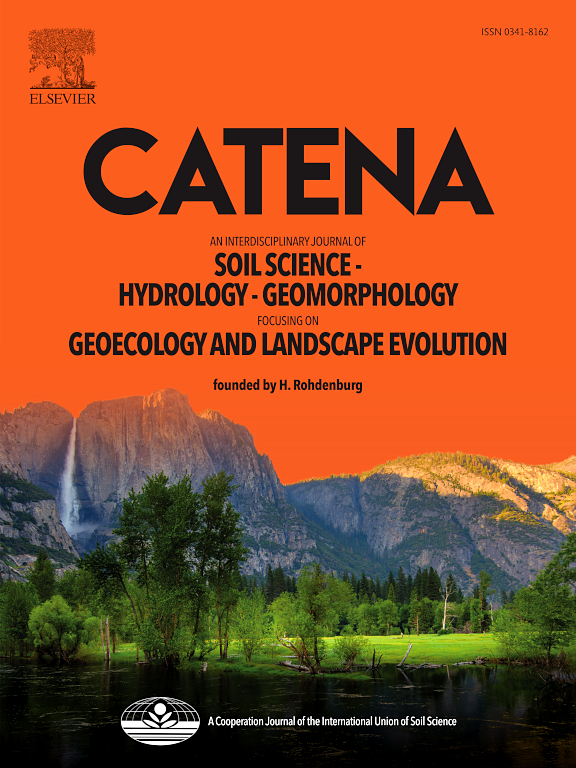National-scale assessment of salt-affected areas in Portugal: Learning from legacy data to establish a framework for comprehensive monitoring and management
IF 5.4
1区 农林科学
Q1 GEOSCIENCES, MULTIDISCIPLINARY
引用次数: 0
Abstract
Developing efficient, cost-effective frameworks to assess the spatial and temporal distribution of salt-affected areas at multiple scales is essential for effective soil management. This study enhanced the Portuguese INFOSOLO soil information system by incorporating legacy data on soil salinization and sodification from 1979 to 2020. National-scale soil maps were then generated using geostatistical stochastic sequential simulation. Soil salinity was mapped based on electrical conductivity data from soil saturation paste extracts of topsoil samples collected in 2015 and 2018, while soil sodicity was mapped using the full coverage of exchangeable sodium percentage data across multiple soil layers. The resulting maps effectively captured significant salinization and sodification trends across Portugal, identifying both natural and human-induced hotspots of salinity and sodicity. However, they did not fully represent the extent of highly saline and sodic areas. Given the absence of a comprehensive monitoring framework for soil salinity and sodicity in Portugal, these findings highlight the necessity of establishing targeted monitoring efforts in identified high-risk areas. Consequently, a well-designed framework is proposed to monitor soil salinity and sodicity in Portugal’s most sensitive regions, particularly important in light of intensified agricultural activities and increasing water scarcity driven by climate change.
求助全文
约1分钟内获得全文
求助全文
来源期刊

Catena
环境科学-地球科学综合
CiteScore
10.50
自引率
9.70%
发文量
816
审稿时长
54 days
期刊介绍:
Catena publishes papers describing original field and laboratory investigations and reviews on geoecology and landscape evolution with emphasis on interdisciplinary aspects of soil science, hydrology and geomorphology. It aims to disseminate new knowledge and foster better understanding of the physical environment, of evolutionary sequences that have resulted in past and current landscapes, and of the natural processes that are likely to determine the fate of our terrestrial environment.
Papers within any one of the above topics are welcome provided they are of sufficiently wide interest and relevance.
 求助内容:
求助内容: 应助结果提醒方式:
应助结果提醒方式:


